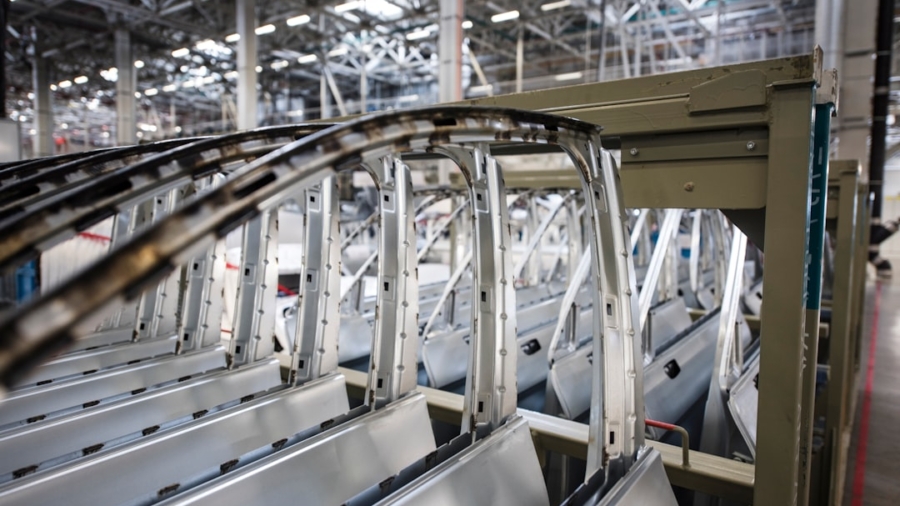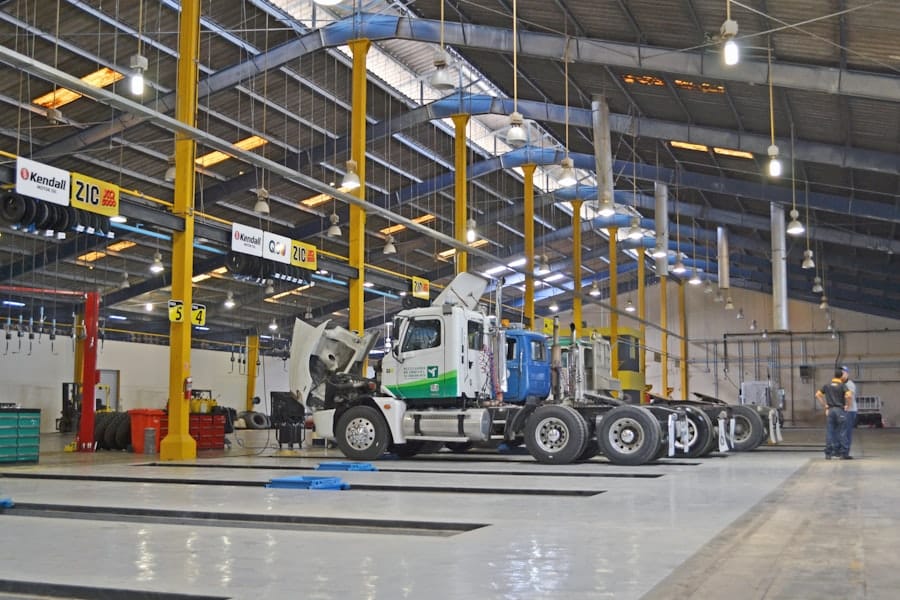The advent of 5G technology marks a significant leap forward in the realm of telecommunications, promising to reshape the way we connect, communicate, and interact with the world around us. Unlike its predecessors, 5G is designed to deliver ultra-fast data speeds, reduced latency, and the ability to connect a vast number of devices simultaneously. This next-generation network operates on a higher frequency spectrum, which allows for greater bandwidth and improved performance.
The implications of 5G extend far beyond mere enhancements in mobile phone connectivity; they encompass a wide array of applications across various sectors, including industrial automation, healthcare, agriculture, and smart city infrastructure. As industries increasingly rely on digital solutions and the Internet of Things (IoT), the capabilities of 5G become even more critical. The technology is not just about faster downloads or streaming high-definition videos; it is about enabling real-time data exchange and communication between devices, machines, and systems.
This connectivity is essential for the development of smart factories, autonomous vehicles, and advanced healthcare solutions. With the potential to support millions of devices per square kilometer, 5G is set to be the backbone of a new era of innovation and efficiency across multiple domains.
Key Takeaways
- 5G technology is the next generation of wireless communication, promising faster speeds, lower latency, and increased connectivity.
- 5G’s impact on industrial automation includes improved efficiency, real-time data analysis, and enhanced machine-to-machine communication.
- Enhanced connectivity and communication in manufacturing with 5G enables seamless integration of IoT devices, robotics, and automation systems.
- Advancements in remote monitoring and control with 5G allow for real-time tracking, predictive maintenance, and remote operation of industrial equipment.
- 5G plays a crucial role in smart cities and infrastructure by enabling smart transportation, energy management, and public safety systems.
5G’s Impact on Industrial Automation
The impact of 5G on industrial automation is profound, as it facilitates the seamless integration of advanced technologies such as artificial intelligence (AI), machine learning, and robotics. In manufacturing environments, where precision and efficiency are paramount, 5G enables real-time data collection and analysis from connected machines and sensors. This capability allows for predictive maintenance, where potential equipment failures can be identified before they occur, thus minimizing downtime and reducing operational costs.
For instance, a factory equipped with 5G technology can monitor the performance of its machinery continuously, adjusting operations dynamically based on real-time data insights. Moreover, 5G enhances the ability to implement autonomous systems within industrial settings.
For example, in a warehouse setting, autonomous drones can be used for inventory management, scanning barcodes and tracking stock levels in real-time. The integration of these technologies not only streamlines operations but also improves safety by reducing the need for human workers to perform hazardous tasks.
Enhanced Connectivity and Communication in Manufacturing
In the manufacturing sector, enhanced connectivity through 5G technology transforms how machines communicate with each other and with human operators. Traditional manufacturing processes often rely on wired connections that can be cumbersome and limit flexibility. In contrast, 5G enables wireless communication that is both fast and reliable, allowing for greater mobility within production lines.
This flexibility is particularly beneficial in environments where equipment needs to be reconfigured frequently or where space constraints exist. Furthermore, the ability to connect a multitude of devices simultaneously means that manufacturers can implement more sophisticated systems for monitoring and controlling production processes. For instance, smart sensors can be deployed throughout a factory to collect data on temperature, humidity, and machine performance.
This data can then be transmitted in real-time to a central control system that analyzes it to optimize production schedules and resource allocation.
Advancements in Remote Monitoring and Control
Remote monitoring and control capabilities are significantly enhanced by 5G technology, allowing businesses to manage operations from virtually anywhere in the world. This is particularly advantageous for industries that require constant oversight of equipment or processes. For example, energy companies can utilize 5G to monitor remote wind farms or oil rigs in real-time, ensuring that operations run smoothly without the need for constant physical presence on-site.
The ability to receive instant alerts about equipment performance or environmental conditions enables quicker decision-making and response times. In addition to energy management, remote monitoring facilitated by 5G is revolutionizing sectors such as logistics and supply chain management. Companies can track shipments in real-time using connected devices that relay information about location, temperature, and humidity levels during transit.
This level of oversight not only enhances operational efficiency but also improves customer satisfaction by providing accurate delivery estimates and ensuring product quality throughout the supply chain.
5G’s Role in Smart Cities and Infrastructure
The concept of smart cities is becoming increasingly viable with the implementation of 5G technology. Smart cities leverage interconnected systems to improve urban living through enhanced services such as traffic management, waste management, and public safety. With 5G’s high-speed connectivity, city infrastructure can communicate more effectively with one another.
For instance, traffic lights equipped with sensors can adjust their timing based on real-time traffic conditions, reducing congestion and improving overall traffic flow. Moreover, public safety initiatives benefit from 5G’s capabilities as well. Surveillance cameras equipped with AI can analyze footage in real-time to detect unusual activities or emergencies.
In the event of an incident, emergency services can be dispatched more quickly thanks to instant communication between various city departments. Additionally, smart waste management systems can notify city services when bins are full, optimizing collection routes and reducing operational costs.
Revolutionizing Healthcare with 5G
The healthcare sector stands to gain immensely from the implementation of 5G technology. One of the most significant advancements is in telemedicine, where patients can receive medical consultations remotely without the need for physical visits to healthcare facilities. With 5G’s low latency and high bandwidth capabilities, video consultations can occur seamlessly, allowing healthcare providers to assess patients effectively from afar.
This is particularly beneficial for individuals living in remote areas or those with mobility challenges. Furthermore, 5G enables the use of advanced medical devices that require real-time data transmission for monitoring patients’ health conditions. Wearable devices equipped with sensors can continuously track vital signs such as heart rate or blood glucose levels and transmit this data to healthcare providers instantly.
This capability allows for proactive health management and timely interventions when necessary. For example, a patient with chronic heart conditions can be monitored remotely, reducing hospital visits while ensuring that any alarming changes in their health are addressed immediately.
5G’s Influence on Agriculture and Farming
In agriculture, 5G technology is paving the way for precision farming practices that enhance productivity while minimizing resource usage. Farmers can utilize connected sensors placed throughout their fields to monitor soil moisture levels, crop health, and weather conditions in real-time. This data-driven approach allows for more informed decision-making regarding irrigation schedules or fertilizer application, ultimately leading to increased crop yields and reduced environmental impact.
Additionally, drones equipped with 5G connectivity can be deployed for aerial surveys of farmland. These drones can capture high-resolution images that help farmers assess crop health or identify areas needing attention. The ability to analyze this data quickly enables farmers to take immediate action rather than waiting for traditional assessment methods that may delay responses to issues like pest infestations or nutrient deficiencies.
The Future of 5G in Accelerating Digital Transformation in Industries
As industries continue to embrace digital transformation initiatives, 5G technology will play a pivotal role in accelerating these efforts across various sectors. The combination of high-speed connectivity and low latency will enable businesses to implement advanced technologies such as artificial intelligence (AI), machine learning (ML), and augmented reality (AR) more effectively than ever before. For instance, manufacturers can leverage AI algorithms that analyze production data in real-time to optimize processes dynamically.
Moreover, as more devices become interconnected through 5G networks, the potential for creating smart ecosystems within industries expands significantly. Companies will be able to harness vast amounts of data generated by connected devices to drive innovation and improve operational efficiency. This shift towards data-driven decision-making will not only enhance productivity but also foster a culture of continuous improvement within organizations.
In conclusion, the transformative power of 5G technology is evident across multiple sectors as it enhances connectivity, communication, and operational efficiency. From industrial automation to healthcare advancements and smart city initiatives, the implications of this technology are far-reaching and profound. As we move forward into an increasingly digital future, the role of 5G will undoubtedly be central in shaping how industries evolve and adapt to new challenges and opportunities.
In addition to the role of 5G in accelerating digital transformation in industries, businesses can also benefit from utilizing the best software for interior design in 2023. This software can help companies streamline their design processes and create visually appealing spaces that align with their brand image. To learn more about the top trends in e-commerce business, check out this article. Additionally, utilizing the best software for online arbitrage can help businesses maximize their profits by identifying and capitalizing on opportunities in the online marketplace.
FAQs
What is 5G?
5G is the fifth generation of wireless technology that promises significantly faster data download and upload speeds, wider coverage, and more stable connections.
How does 5G accelerate digital transformation in industries?
5G enables industries to leverage advanced technologies such as Internet of Things (IoT), artificial intelligence, and augmented reality to improve operational efficiency, enhance customer experiences, and drive innovation.
What are the key benefits of 5G in industries?
Some key benefits of 5G in industries include lower latency, higher bandwidth, increased connectivity for IoT devices, and the ability to support mission-critical applications.
Which industries are expected to benefit the most from 5G?
Industries such as manufacturing, healthcare, transportation, logistics, and energy are expected to benefit the most from 5G due to its potential to enable automation, remote monitoring, and real-time data analysis.
What are the challenges in implementing 5G in industries?
Challenges in implementing 5G in industries include the need for significant infrastructure investment, security concerns, and the complexity of integrating 5G with existing systems and processes.



